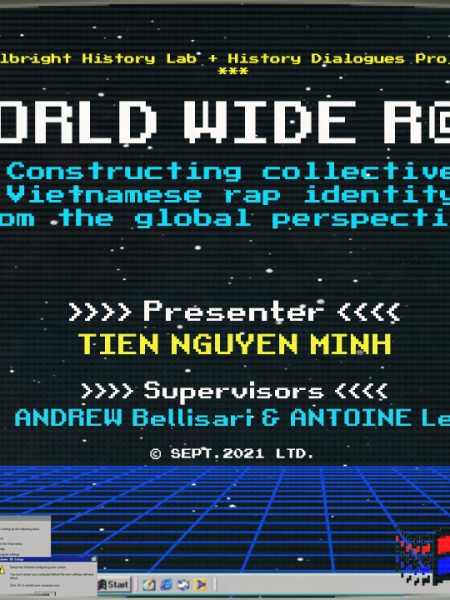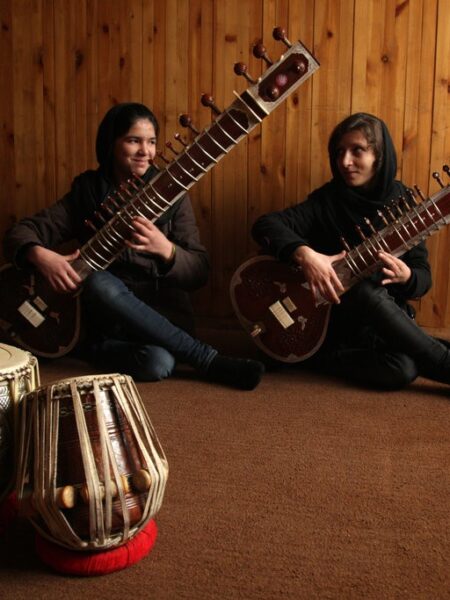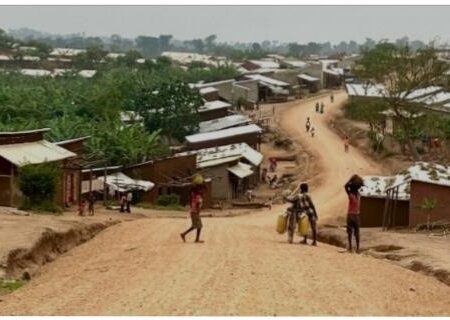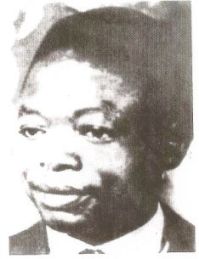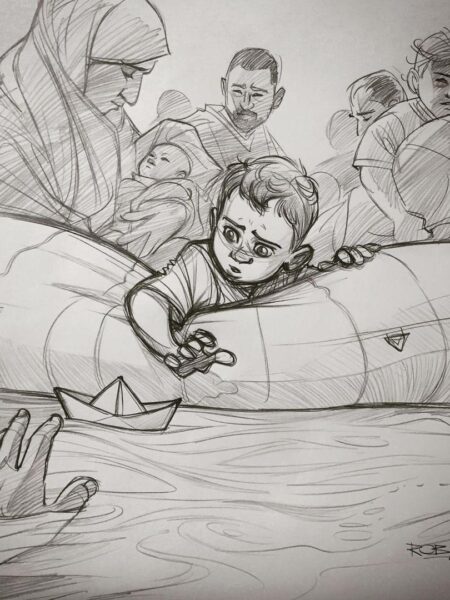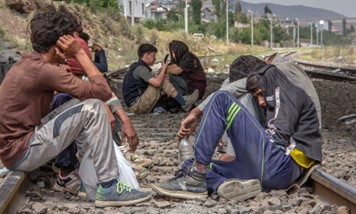“The world does not know half as much about the circus as it thinks it does. Back of the glamour and the whoop-la… is a world all to itself, filled with humanity, but by the very nature of its calling, made a world apart” (Ringling Bros. and Barnum & Bailey program, 24).
The circus is a place for live entertainment, usually covered by a large tent. Spectators sit around a circular arena. They come to see funny, impressive and out of the ordinary acts. The place is decorated, uses lights and music to create a spectacular atmosphere. The show lasts from one to two hours and is composed of different acts that perform one after the other. There is one presenter who is in charge of the beginning and the end of the show as well as introducing each act. There are performances that are typical of circus shows, such as clowns, jugglers and horse acts. Performers have either integrated the circus world or are part of a family circus. Each act has its own history, costume and music, but there is nonetheless space for creativity and novelty. Traditionally, circuses are a traveling business, as it financially sustains itself by moving between towns and countries. However, successful circuses have been able to buy buildings (Cirque d’Hiver in France; Cirque Krone in Germany). The rest travels for a few months presenting its seasonal show, before settling down to set the next tour. Traditional circuses are often family businesses. People love the circus for its ‘out of the ordinary’ aspect but the lives of those making the show are often misunderstood and disregarded.
It is difficult to find information about the circus and its people. They are very difficult to reach and to talk to because circus communities are oftentimes secluded (Offen, 5). They stay outside of cities or do not settle for very long. Working for a circus usually requires being able to travel thus dealing with visas/settlement permits and being able to live in a foreign country. It is necessary for a circus to constantly move to make profit out of gaining popularity. In addition, working for a circus also means creating bonds with people that have the same lifestyle (Barré-Meinzer 94). My uncle said once, “the caravan, for me, isn’t a house like you would think it is. The caravan is a room. The house is the circus. People think that we change, because we travel but we don’t. It is only the space around us that changes and that’s it” (Mauclair 1993). Thus, people outside the circus often know very little about it and the experience of performers. Circuses are not included in conversation about racism, segregation and stigmatization even though they are as exposed to it as much as minorities and migrants. This paper explores the life of performers to give a voice to the unheard, to teach people about their opinions and experiences.
Performers spend a lot of time traveling and preparing for journeys. Borders and travel restrictions matter a lot in circuses, since it would directly impact their financial stability. However, there have been a lot of changes in Europe during the past century regarding the concept of borders. Before 1995, western EU members (Italy; F.R.Germany; France; Spain; Netherlands; Belgium Luxembourg; Austria) run under a passport-free agreement issued by the Council of Europe in 1957 (House 61). Today the EU has the Schengen Area agreement which allows complete freedom of movement for European citizens between twenty-six members. Iceland, Norway, Ireland, Romania, Bulgaria, Croatia and Cyprus are not part of it. The agreement was implemented in 1995 and harmonized rules controlling external borders and formed a common judicial system and police cooperation. It also grants settlement permits to any person living in a dangerous country who is seeking refuge (Cremer 2016). However, in the past decades there has been a reinforcement of borders controls as a prevention against terrorism and illegal markets. But the new measures are impeding on innocent citizens who have been racially profiled (Keaton 2013). My article seeks to understand if circus performers have struggled crossing borders, the stories shared are from before 1995. They bring a new perspective on border crossings, as the experiences of circuses are often unheard. In addition, governmental actions are questioned by traditional circuses due to their negative impacts on their businesses. The traditional circus has been on the decline since the 1960s (Barré-Meinzer 97). Many laws and lack of support by nation-states are speeding the circus’ downfall. My paper answers the question: how have circus’ performers experienced crossing borders? Why is the traditional circus declining? The article is structured in four sections. Two of them present my theory and my data analysis. The other two introduce the stories of the interviewee crossing borders, as well as their opinions on today’s crisis in traditional circuses.
Theories
In 2004, the EU passed a declaration which stated to combat terrorism by strengthening border controls, “and the use of biometric technology in order to store information (fingerprints, retina scan) about third country nationals as well as EU nationals” (Castan 7; Jasen 5). However, border controls aren’t just a public matter (Jasen 4). Private businesses are placing new measures in airports and train stations to check passengers’ identity documents (1). Today’s racial profiling reminds of 20th century Europe border controls. By taking a look into past regulations, it is possible to reach a better understanding of today’s targeting and segregation. The measures implemented nowadays are only a new version of old procedures against a fear of the “Other.” “Exclusionary mechanisms embedded in the functioning of the border are indirectly preserved” (Jozwiak 57). For example, in the 60s Spain regulated passport issuance, by refraining lower classes, citizens that were seeking work abroad and illiterate individuals who failed to participate in a literacy program from obtaining a passport (House 70). Moreover, “those who failed to enrol in programs intended to mould them into propre Spaniards” (71) were refused acquisition of a passport. Most Roma and circus travellers fell into these categories, suffering from a lack of freedom of movement as well as handling repressive measures put in place to control Roma communities under Franco’s regime (Mannering 2021). In addition, in France “Roma, vagabonds and bohemians” had a special document. Anyone with no fixed residence had to carry a traffic booklet to avoid imprisonment. Before the traffic booklet, it was mandatory to hold an anthropometric identity book, to improve the control, surveillance and identification of Roma on French soil. The notebook was passed in 1912 and certified among other things: “the length of the right ear, the length of the middle fingers and left little fingers, those of the left cubit, that of the left foot, the colour of the eyes, the fingerprints” (Filhol 79). In addition, the identification document contained a sanitary section, on which people were warned that contamination of infectious disease could be transmitted via the booklet holder. France was the only country to impose an anthropometric identity book, which was replaced in 1969 by the traffic booklet, which was abolished in 2017. France was one of the first countries along with Italy, Germany and Austria to approve the “European Agreement governing the Movement of Persons between Member States.” The Agreement was issued in 1957 by the Council of Europe and allowed “enter and exit the territories of other signatories for stays not exceeding three months with one of the documents listed in the appendix” (House 63). However, France made it hard for “Roma, vagabonds and bohemians” (Filhol 79) to enter the country as they were required to provide additional information. The obstacles faced with governments by undesired communities are different from those encountered with citizens. In the case of the circus, the public is unpredictable, meaning that it can build trust and acceptance as well as criticism and rejection.
Since its existence, the circus has permeated many different parts of society. Through its creativity, the circus was important culturally as well as scientifically. In the beginning of the twentieth century in developed countries, scientists would turn to the circus to study the human body and to promote the new scientific progresses of humanity. “Acts and routines encompassing physical strength, human physiology and animal husbandry ‘mediated science for Australia’s popular audiences’ in both the circus and variety theatre” (Toulmin 2). Scientists would rely on the circus as a study case to advertise science to the masses. In addition, over the past centuries the circus became the muse of many artists, such as Picasso, Matisse, Degas and Renoir. It gained an important seat in popular entertainment and greatly shaped visual culture (Toulmin 2). The clown is a good example of the circus’ influence on global northern societies, becoming a predominant figure to enhance joy as well as compassion (Toulmin 2; Barré-Meinzer 100). However, since the 1970s the popularity of circuses have been on the decline (Pavula, 2011). The rise in animal rights activism had disastrous consequences on the circus, as they were quickly targeted by the protestors. Alternative forms of circuses started appearing and the audience shifted attention towards shows that were more theatrical, without animals, which opposed traditional circuses in their context and form (Barré-Meinzer 98). Today, circuses suffer from criticism underlying its traditionality and codes of conduct that reflect principles of a past epoque (Barré-Meinzer 102). Even though some behavioral biologists oppose the bans on circus animals, such as Immanuel Birmelin who thinks they are “unfair” and “wrong” (Von Hofmann 2016) as they are scientifically mistaken arguments. Most EU members have now passed laws to ban circuses from owning wild animals, which is causing much trouble, even to the most reputed circuses (Böhnke & Muntermann 2018).
Data analysis
My questions concerned the experiences of my interviewee as border crossers and circus performers. My goal was to write about personal stories to share the point of view of people who lived a particular lifestyle. I wanted to discover if traveling with the circuses meant discrimination, stigmatization and racial profiling. I also wanted to hear about how they felt and what stuck with them the most. They interconnected their stories to other personal encounters with locals and governments. They emphasized on the act of kindness of citizens when the circus was struggling to receive basic necessities. They also had to face unpleasant situations involving the police and lawyers when municipalities were hindering the circus business. However, when past experiences were compared to present conditions, the conversation would take a sad turn. My interviewees shared similar feelings regarding the struggles that the circus realm is facing today. Each of them gave different reasons as to why the circus is no longer an attractive entertainment industry. They showed worry for their youngest generations and for the future of their art. I chose these three people as they had divergent family histories. I wanted to give different accounts of journeys, relations with the public and private realm. Each of my interviewees experienced the circus differently. Marcel gained experience in animal training and performing, when Gabi was an acrobat and Sampion organized circus tours and performed a horse act for a short time. Sampion was raised financially stable while the other two interviewees had just enough to survive. In addition, for Sampion traveling wasn’t a necessity, as his family circus settled in Paris, while Marcel never stopped traveling after he joined the circus. Gabi grew up in a family that has been traveling for generations, because she and Sampion have inherited their ancestors’ art, as being partly Roma.

My first interview was with Sampion Bouglione, who is known in the circus world and is a close friend of my father. We had exchanged a few text messages before I interviewed him, on June 26th 2021, in Paris next to the Cirque d’Hiver Bouglione. The interview lasted two hours, we started in a café and finished in his collection of vintage circus goods that he collected throughout the years. The interview was partially recorded due to technical problems, but the interview was nonetheless very rich. He felt comfortable enough to share stories that might have put other people in an uncomfortable position. There was no language barrier since we both spoke in French during the entire session. I felt he was happy that I understood the intricacies of the business, without having to explain in detail. When we went to see his collection, he told me about the story of each piece that I was interested in. He knew a lot about the history of circuses and the people who made historical achievements. There I took pictures of decors, costumes, documents and publicity posters. When we started talking about issues within the borders of a country, he was very vocal about his opinion regarding the French government’s relation to the circus. He had critiques and comments which were very useful in understanding his mindset.

Seven days later (July 3, 2021), I met with my second interviewee who was my aunt. Gabi Nicolodi was more than happy to answer all my questions. She is from a family of acrobats, thus she grew up in the circus and taught her profession under the supervision of her father who learned it thanks to his father. We met to have lunch in her apartment in Paris with her husband. She has performed in many circuses and cabaret throughout Europe. At the interview, the ambience was joyful and very talkative which made the conversation deviate from the topic. I was able to record the entirety of the interview, which happened before and after the meal. My uncle was present but did not participate, since my aunt shared more information than what I needed. She had many stories to tell, which built interesting conversations about society and poverty. The interview lasted two hours as she showed me pictures of her and her family. We interacted in Italian and I could tell she was enjoying my interest in our family’s history.
My last interviewee was a worldwide known animal trainer who has been traveling the world for his profession for more than forty years. His name is Marcel Peters, we had a call on July 17 2021. He was located in Monaco taking care of elephants and I was in London. The interview was done in English and was through a phone call which greatly impacted the flow of the conversation. He did not want to facetime, so I was not able to see his expressions. Marcel joined the circus when he was fifteen years old. He was not sharing stories but rather facts and opinions about his profession and the circus realm. The interview lasted an hour and did not contribute much to the rest of the paper. He did not feel comfortable answering questions about his personal connections. He gave me cold responses I asked about traveling and how that felt. His awkwardness showed me that he was not used to such questions. Thus, I collected shorter stories from him, as he didn’t feel inclined to open up.
The Interviewees’ History
Contextualizing the history background of my interviewees will add individuality and uniqueness to their personal stories. Thus, the paper will be read with more understanding of the person’s feelings and qualitative research. The circus is a community that is often unheard and misunderstood because there is little shared information about the circus and its people. However, it is worth mentioning that within the circus individuals have distinct lives and different backgrounds, thus it is important to be specific so as to avoid generalizations.
The Bouglione’s Journey
Sampion is fifty-five years old, he is today the communications director of the Cirque d’Hiver, which is a well-known circus in Paris and his family’s business. However, his family started as poor immigrants from Italy. His ancestor, the son of a cloth manufacturer, arrived in France in the nineteenth century, after marrying a young “gypsy”a tiger tamer. At the border between Italy and France, officers asked them to identify themselves. However, due to analphabetism no one knew how to spell their name. Thus, their surname that was originally ‘Boglioni’ turned into ‘Bouglione.’ In a cemetery close to Paris called Lizy sur Ourcq, such mistakes can be found on members of the family’s graves. It is worth assuming that the replacement of a ‘i’ by a ‘e’ and the removal of the ‘u’ helped his family assimilate into the culture. It is possible that the francization of their name helped with their success in France later on, as in Germany, the director of one of the biggest circuses in Europe today, changed the name ‘Cirque Charles’ which sounded to foreign to ‘Cirque Krone’ at the end of World War One. After this small change the circus became internationally known, touring in Italy and Spain.
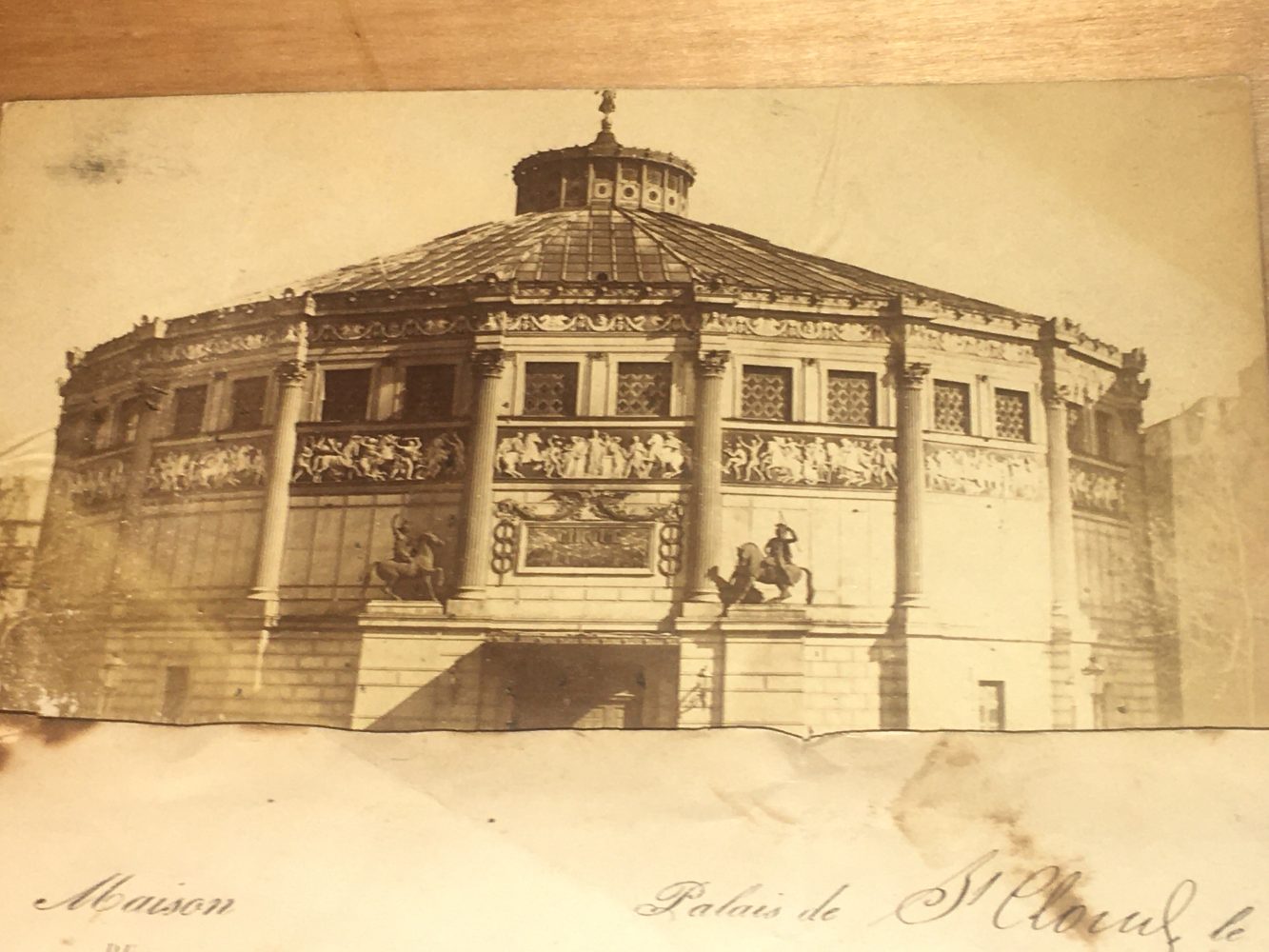
In France, the couple toured the country with a fairground, which lasted until their grandsons changed it into a circus a century later (“Histoire” 2021). In 1934 the four Bouglione brothers bought the Cirque D’Hiver (Winter Circus), a magnificent theatre in the centre of Paris. Since then, the Bouglione circus performed in the Parisian theatre as well as toured around the country until 1980. While in 1980 the Cirque D’Hiver was rented for shows and events, Sampion and his younger cousins went to work with other circuses.
Poverty in Italy after World War Two
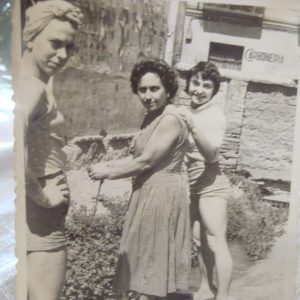
Gabi, an eighty-year-old woman, introduced her family background by telling me that her ancestors were part of an Italian circus, which back in the day was very small. She remembers that everyone was poor as it was just after the end of World War Two. The Italian circuses were miserably poor after being persecuted by the government because of their ethnicity. “We were twelve for six thousand Italian lira[1]” and their wages were cut during winter because the temperature was too low. To survive through the miserable seasons, the family would hand over their jewellery to a ‘monte di pietà’.[2] Other times, when they would go perform in lounges, they used a broken record player, which the grandfather had to turn with his finger. Sometimes in the summer, in Busto Arsizio, they would build in the open air, a gazebo to perform and collect some pocket money. Her two brothers, who weren’t much older than her, tried to construct their own circus, building the tent with an old sewing machine, soaking the textile in colour. Their strength and ingenuity were the only tools they had.
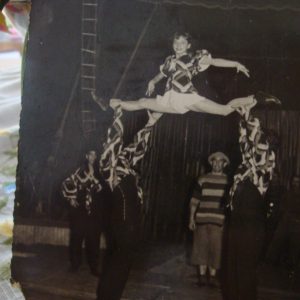
Gabi started performing at six years old. “When you were a kid you couldn’t say you were fatigued. Once, I tried to say it. My mother and others laughed at my face, saying ‘she is fourteen years old and she is tired!’ I never said it again in my life.” Child labour had zero regulations until November 1961, when a law passed raising the minimum working age to fifteen years old (Saraceno 13). During the 40s and 50s, Italy went through extreme poverty that required everyone in the household to provide for themselves. During those times, children had as much responsibility as adults. Gabi use to go to taverns with other children to perform in exchange of money or food.
Children had to be independent and learn to satisfy their needs. After the legislation, a study run by the Associazione Cristiane Lavoratori Italiane (Association of Christian Italian workers) in 1967 proved that forty percent of children said to work due to the familiar critical economic condition (14).
A British Animal Trainer
Marcel Peters also experienced child labour, when he joined the circus. He joined the Billy Smart Circus at fifteen years old (he is seventy-five now) when they arrived close to his residence. “I left everything behind.” Thus, in 1961 he was employed to take care of horses. “My parents carried on with their lives. It was like someone[3] joined the army.” He was happy to be part of “this big family, where everyone was taken care of.” He bonded with the trainers and owners, who took him under their wing. “Everybody in the animal business starts very small, you have to learn your profession, that usually takes a few years.” He felt very close to the people who taught him to take care of animals. “I had really good trainers.” “They were Austrians. So, I learned German. I bought a book, ‘English to German’ at sixteen years old.” He then learned the profession traveling around England, Wales, and Scotland. He travelled through Europe with Billy Smart’s elephants and polar bears until 1973. “I worked hard all my life and I knew what I wanted to do.” Since 1990, he has been based in Valencia, Spain, as he owns an animal training business. His children followed a normal lifestyle, growing up and going to school in the United Kingdom.
The Travels of Performers in pre-1995 Europe
This part will take a look into the feelings and lived experiences of those who are often unheard, in order to reach a wider perspective on the consequences of border crossing. Some people, like Sampion, faced racism at the borders, as he was being constantly stopped and checked. He also received downgrading comments by officers. However, by being in a position of powerlessness, the attack is felt twice as strong, as there is no way of defending oneself when the goal is to cross the border. Moreover, Gabi was under economical pressure which did not let her travel in peace. She was also in a powerless position, since she could not do anything about her family’s poverty. She wouldn’t sleep or has intense anxiety during the journeys. However, Marcel thought of borders as part of the profession. He did not put much thought into it, because he was never in a critical position while traveling. Marcel is nonetheless right that crossing borders is necessary in order to keep working within the circus world. Performers make a living out of traveling and that is what allows them to keep going. All of the recounts will help the reader empathize with those who cross borders to sustain their living.

Sampion was one of the youngest of the Bouglione family (thirty years old) when the Cirque d’Hiver started having financial issues. The family decided to send the youngest away, to perform in other circuses. Sampion signed a contract to tour with Cirkcus Scott from 1987 to 1994. He shared his journey to Sweden: “the first years in Sweden, we left [France] with the horses. It was a bit complicated. We had to cross the borders. We needed the ATA papers for the animals.” Temporary Admission Carnet, also called ‘passport for goods’, which allowed the entry of any non-perishable goods under an official declaration. He specified that entering Sweden was a long process, since they had to wait at the borders for a veterinarian to check the animals’ health. In the 80s, Sweden was one of the first along with other Scandinavian countries to promote animal rights in Europe (Understanding Animal Research, 1). Even though Sampion was going to work for a deemed circus — the King and the Princess of Sweden attended the shows — the country strictly applied its regulations onto him. However, he wasn’t sure and thought that it might have been because of his appearance. “I don’t have the face of a Swede, so I would get stopped a lot, and they would check. They wouldn’t find anything but they would always bother you.” After working for nine years in Sweden, he performed for two years in the Louis Knie Circus in Austria. There, he strongly emphasized his fear of crossing borders. He said that he felt nervous around officers at the borders.
Sampion has lived discrimination, as he felt compelled to make this claim. He was aware of the prejudices and potential threats someone from the circus might experience. If you are crossing borders with fake documents or illegal goods, “you can still cross, but with a pit in your stomach, which isn’t what you look for.” During the interview, Sampion once justified officers’ persistence over border controls as a consequence of too much “zeal.” It was in Belgium, when an officer entered the caravan to check and saw a book and exclaimed: “you know how to read now!” The interviewee commented, saying “of course, you don’t say anything. They didn’t find anything but if they want to, they can find something. [For example] they will tell you that a tire isn’t properly inflated. They stop you, take your papers and leave for two hours. They tell you that you are missing a stamp, etc.” On one hand, you are fully at the mercy of the customs agent, who can have discriminatory behaviours and arrest anyone for irrelevant reasons. On the other hand, people like Sampion didn’t seem to be outraged by such behaviour, rather the opposite, it was difficult to acquire the information, as if they were ashamed. Gabi had a similar relation to border controls; she kept the stories short and vague. For her traveling was always the most stressful period, as it was also shared by Sampion. The borders were hard to cross, she explained, “you had to wait a long time.” She described the journeys as exhausting for all of them, as they didn’t have the means to travel comfortably. As a child, Gabi was scared of the consequence of the rain, the cold and the rust of the machinery. “I would get anxious about the engine not starting anymore! I couldn’t wait to arrive, because I was so scared the camions would break. I was scared that then we wouldn’t have the money to repair the trucks.” Her anxiety reflected her family’s poor conditions. Before the 1950s, they would take days to cross countries. “It was an expedition leaving, you have no idea!”
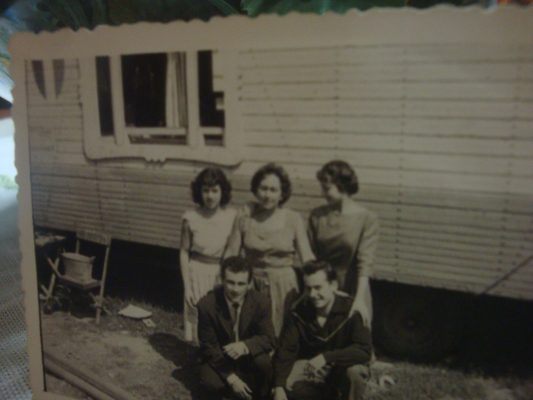
They took four days to get to Spain from the North of Italy. Today, a car trip from Reggio Calabria (south of Italy) to Gibraltar (south of Spain) takes a maximum of two days. In addition, due to their financial situation, they would make dangerous deals in exchange for money. Once, a circus owner asked her parents to bring accordions from Italy to Spain. Apparently, it was illegal at the time to transport such goods. Fortunately, they did not get spotted at the borders, but the risk was present, and could have had major juridical consequences. Contrary, Marcel seemed to never have experienced such issues with borders. Marcel was well aware of the European regulations on crossing borders with animals. He has been traveling with animals for half a century now. However, he mentioned it was easier before the Schengen Area, “you had ways to go through it.” He was nonetheless always prepared when arriving at the entrance of a country. “You were required to have your transit papers, your vet’s certificate.” For decades, animals were required to have a tattoo or a microchip and a passport, to track them. It was mandatory to declare the destinations of the animals at the borders and stick to that “trace document” inside the country. Thus, he relied mostly on having the right papers and his performer agent to certify his right to cross the frontiers. Compared to my other interviews, he seemed to consider the stress and fear, as part of working with the circus. “You could handle it being in this profession.” The circus is perceived by many performers to be a serious job, with rules and norms (Barré-Meinzer 96). Thus, by comparing the three interviewees Marcel never had a negative experience crossing borders. For that reason, it is easier for him to talk about it rationally and confidently. On the other hand, Gabi and Sampion had to deal with stress and fear, due to past experience or bad economic conditions. For Marcel crossing borders is not complicated and does not require much effort, rather for Gabi and Sampion it enhances anxieties that are difficult to handle.
The Decline of Traditional Circuses
A bigger issue needs to be addressed, since without circuses there is no reason for performers to travel. Today more than ever the circus realm is experiencing an intense decline in its popularity, which might be due to the new waves of entertainment that go well beyond the cinema and television. In addition, since the 1970s, the traditional circus has been criticized by animal activists, as well as the European audience for maltreating animals (Norton 2021). Traditional circuses are being replaced by contemporary circuses that have emerged as a consequence of the audience’s dissatisfaction (Pavula 2011). Moreover, “nineteen EU member states have adopted national bans on the use of wild animals in circuses, three of which prohibit the use of all species, according to a recent report from the Eurogroup for Animals” (Norton 2021). Thus, the traditional circus seems to have come to an end, my interviewees had some opinions on the matter.
The circus has been suffering from European countries’ ban of animal acts and received bad reviews since the beginning of the fight for animal rights (Böhnke & Muntermann 2018). Marcel Peters had some arguments on the topic. He performed around Europe, with polar bears, lions, and elephants. He is considered a “famous trainer” by the MonacoInfo TV channel (MonacoInfo 2014). In his opinion, “if you get rid of the animals, I don’t really know what is left.” He thinks that this rejection of animal performance started with a persistent political group. “The public, really, are the last to know. It all starts with a group. You take Black Lives Matter. It is usually an organization that makes them aware of that.” “Circus entertainment is an easy target, because they aren’t big corporations turning millions and billions of dollars.” The circus has been suffering from these new regulations and the public criticism broadcasted by the media (Böhnke & Muntermann 2018). “It is a very critical time.” Immanuel Birmelin, a biologist who considers activists to be unknowledgeable about animal captivity and animal stimulation, contests the harshness of the new laws. He claims that some animals are better off in circuses than in zoos (Von Hofmann 2016). However, there seems to be a general consensus on the extraction of animals from circuses. Since many wild species are going extinct, it is preferable to support the end of animal capture for entertainment purposes.

However, governmental support for a stable removal of animals in circuses would help reduce the number of businesses which had to close due to the high economic loss. Sampion Bouglione claimed that today the Cirque d’Hiver is receiving no financial support from the government. Sampion heard the French government oppose itself to traditional circuses. Governments prefer to fund ‘new circuses’. The “new circus is notable for theatricality and expressiveness, considerably smaller scale (at least in the early years) with one ring only, typically no circus animals, and overarching theatrical narratives” (Baker 307). The new circus was born in France in the 70s, since the audience was looking for a more contemporary circus without animals and old norms (Pavula 2011; Barré-Meinzer 100). Few years ago, the French government gave out 10.000 Euros grants to institutions designing creative shows. They refused it to the Cirque d’Hiver since it did not feature someone from the theatre. The government seems to want to accelerate the end of traditional circuses. Sampion told me that public officials never come to the circus and when they do they are amazed by how good the show is.
Conclusion
My paper lays out the cross bordering experience of circus performers in Europe. It emphasized on the feelings and opinions of those who are often left out in conversations related to racial profiling and border controls. In addition, circuses have been experiencing a lot of backlash from European citizens concerning animal welfare, which have led to the extinction of many businesses. Moreover, new circuses are shadowing traditional circuses due to governmental and public favouritism for entertainment businesses without animal acts, as well as a lack of integration of new norms and values by traditional circuses. My interviewees are part of a community that is misunderstood due partially to its segregationist tendencies. The stories revealed that people within the circuses can also be exposed to discrimination and fear of borders. Sampion Bouglione and Gabi Nicolodi had to face depreciation and anxiety from leaving outside of society. People have prejudices of caravan’s owners even though there is little known about their livelihood. Crossing borders was always a difficult task for those who had a stigma. The prejudices of circuses and performers have infringed on their reputation and finances. Circuses experienced a loss of money, time and visitors, due to governmental infringement of signed agreements. The French governments are not willing to offer financial support, as they consider traditional circuses to be old-fashioned. Today, animal circuses are banned, and new circuses are being promoted all over France. “The ‘Golden Age’ of traditional circus was the early 20th century (Baker 307).” Nonetheless, the circus will never disappear. If it does, it will keep living in our history books, as it has influenced European cultures for centuries. Because, men and women travelled miles, encountered threats and misery to bring joy and novelty to thousands of people. It is thanks to the will of many, the strength of countless, that circuses keep fascinating us. The circus is magical to an audience that only sees the show, but it is precious to those who know the intricacy of making it.
[1] $3.63
[2] an institution offering loans in exchange for items.
[3] Interviewee was referring to himself




